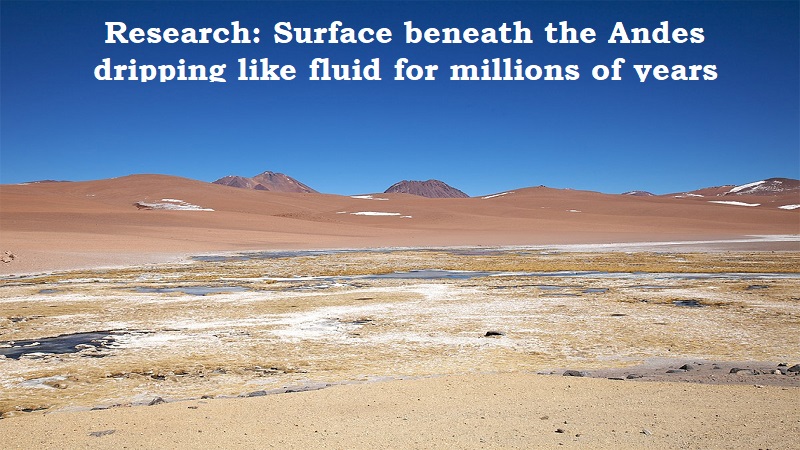
For the first time, scientists have found a rare development taking place beneath the Andes, the world’s largest continental mountain range: the crust there is pouring like honey and has been for millions of years. The mantle, the layer below the crust, is consuming the material.
Researchers found that the rocky outermost layer of Earth’s shell is continuously sinking into the more fluid layer of the planet’s mantle in a process called lithospheric dripping. As a result, the surface is being significantly deformed, resulting in the formation of basins, the folding of the crust, and irregular elevations.
The crust, mantle, and core are the three layers that make up the Earth’s surface. The crust is located on the outside.
According to a study that was published in the journal Communications Earth & Environment, the Central Andes plateau and basin have experienced internal tectonic deformation over the past 20 million years in addition to rapid subsidence and uplift periods.
‘The formation of the Arizaro Basin and nearby Central Andean basins are caused by symptomatic lithospheric dripping events and highlight the significant role of non-subduction geodynamic mechanisms in driving surface tectonics,’ researchers concluded in the paper.
Lithospheric dripping has been observed all over the world, notably in the Central Anatolian Plateau in Turkey and the Great Basin in western US, even if the findings are novel in the field of plate tectonics. Researchers at the University of Toronto and its colleagues have confirmed that various places in the central Andes Mountains in South America were formed the same way.
‘We have verified that a significant amount of the lithosphere beneath a region of the Andes Mountains’ surface deformed and avalanched away. Due to its high density, it trickled like cold syrup or honey deeper into the planetary interior and is probably to blame for two significant tectonic events in the Central Andes that shifted the region’s surface topography by hundreds of kilometres while also crunching and stretching the crust’s surface,’ according to lead author Julia Andersen of the paper.
The phenomena, according to scientists, is thought to occur when the lowest layer of the Earth’s outer shell reaches a specific temperature and begins to thicken and leak into the mantle below. As it sinks it first forms a basin at the surface which later springs up when the weight below breaks off and sinks further into the deeper depths of the mantle.
In order to comprehend what happened thousands of years ago that resulted in the current mountains in the area, the team created models to replicate the settings and situations. The discoveries, according to the researchers, are intended to elucidate how mantle processes relate to crustal tectonics.
‘The discoveries show that the lithosphere can be more volatile or fluid-like than we believed,’ Earth sciences Professor Russell Pysklywec, co-author of the study concluded.

Post Your Comments